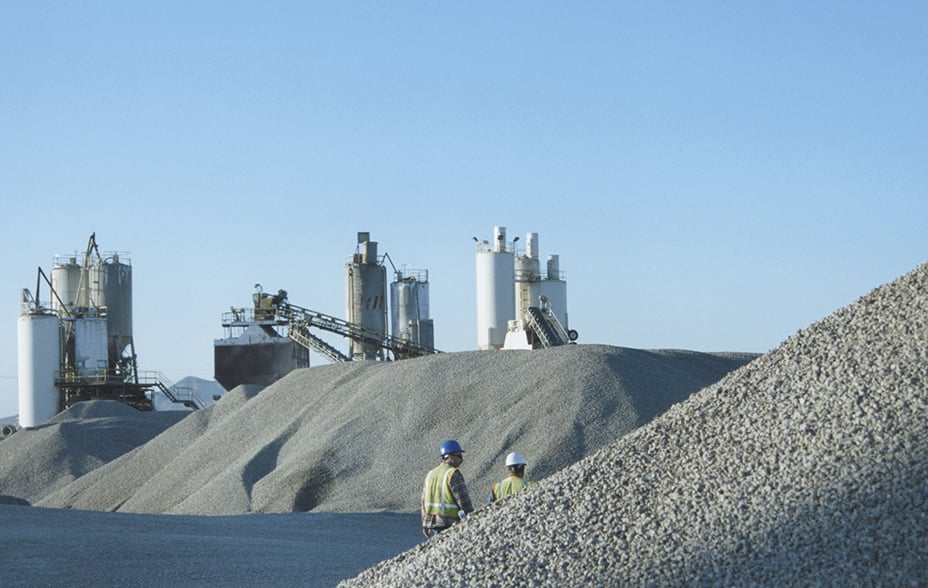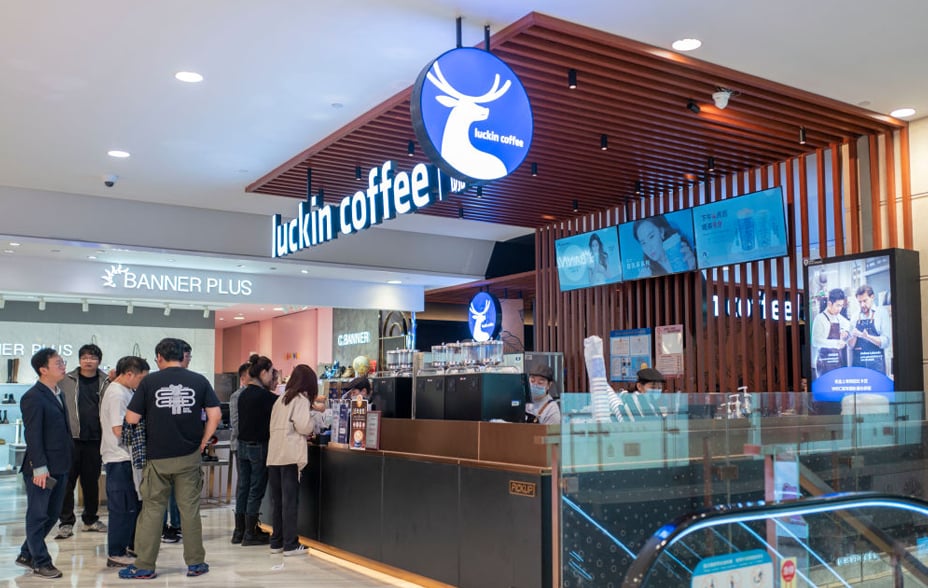Key points:
- Monks is focused on the operational and strategic progress of its holdings
- Portfolio companies Elevance, Martin Marietta Materials, and Royalty Pharma are doing better than current market valuation suggests
- Service Corp International and AIA are recovering well while pioneers Moderna and Meta offer long-term opportunity

All investment strategies have the potential for profit and loss, capital is at risk. Past performance is not a guide to future returns.
Our approach to managing Monks dictates that we assess the prospects for holdings over a three-to-five-year period. That’s the usual timeframe over which we can assess strategic and operational progress.
In a normal market environment, the lower end of this timescale might make us six or seven times more long-term than the market average. In the current environment, it feels more like 15 times.
Rarely, if ever, has our approach been so out of step with the prevailing market narrative.
Grounds for confidence: persistent evidence of growth and quality
Against such a backdrop, we continue to revisit the underlying growth drivers that underpin the Monks portfolio. And when we do so, we remain very confident that the growth tailwinds will either endure despite global economic challenges or strengthen because of them.
The critical imperatives to upgrade ageing infrastructure, decarbonise the economy and better meet the needs of ageing populations have not gone away. Nor have structural bottlenecks in critical resources, cloud infrastructure and logistics networks. All these tailwinds persist, regardless of the market’s focus.
Our confidence is bolstered by the financial health and operational growth of our portfolio. Using available data to the end of August, it is forecast to grow both sales and earnings at over twice the rate of the broader market. At the same time, the superior aggregate financial robustness of our holdings (net debt is just a third of the index) supports their ability to allocate materially higher levels of capital to research and development. This is investment that will extend their advantages in years to come. Additionally, gross and net margins across the portfolio remain much stronger than the market averages.
Allied to this persistent evidence of superior growth and quality across the portfolio is a sense that we find ourselves amidst a once-in-a-generation opportunity stemming from the market’s addled state.
Once in a generation dislocations: what the market is missing
The beneficiaries of inflation and capital scarcity
We remain excited, for example, by portfolio holdings that enjoy a ‘pricing umbrella’, whereby companies can flex the hard-won pricing power arising from inflation. US health insurance business Elevance effectively free rides on medical cost inflation – a dynamic that has helped earnings per share more than double over the last five years. The market is assigning this company a multiple of less than 14 times this year’s earnings, implying an imminent and abrupt slowdown. By way of contrast, our conviction is that Elevance’s historic rate of growth will be not just maintained but potentially accelerated by its relatively underdeveloped digital services platform.
Another example is Martin Marietta Materials, the US provider of construction aggregates. We have held this company for more than 10 years and the management team has never been as upbeat on the long-term outlook for pricing. The company’s long-term strategy of local consolidation and prioritising value over volume has helped develop greater discipline across the industry and Martin Marietta is now leading the industry in introducing price adjustments on a semi-annual basis for more than half its markets. Even in the highest-priced regions, there is no evidence of reduced demand or significant pushback. With the average price per tonne less than half that in the highest-priced regions, there remains a very significant runway of growth ahead.

Similar market blindspots are in evidence when we consider the impact of tightening access to capital. For a company such as Royalty Pharma, the leading acquirer of pharmaceutical royalties, the shift from capital abundance to capital scarcity significantly strengthens the investment case. The last three years have already seen a significant acceleration in capital deployment, reflecting increased funding demand from biotechs. With the sale of royalty streams still representing only around 2 per cent of the overall funding mix for biopharmaceutical companies, the potential decades-long runway to deploy increasing amounts of capital at very attractive returns has only become clearer – a view at odds with the current single-digit earnings multiple.
Post pandemic recoveries
Several companies within the portfolio have taken time to normalise operations in the wake of the Covid pandemic. But over the last year or so, we’ve seen many holdings dust themselves off and quietly and competently get back to growing nicely without the market noticing. One example is US funeral care provider Service Corp International. The company’s financial performance over recent years has been unusually volatile reflecting the impact of lockdowns. But as we look ahead, we see no reason why this company’s proven discipline around capital allocation, allied to superior size, scale, purchasing power and technology, should not continue to consolidate the long tail of independents which still represent 75 per cent of the industry and accelerate earnings growth towards 20 per cent.
Elsewhere, AIA continues to execute strongly despite the challenges of the pandemic. The Asian life insurer has successfully increased the productivity of its sales force, broadened distribution capabilities, and secured regulatory approval to sell insurance products in more Chinese provinces. The company is growing the value of its new business at just shy of 40 per cent year-over-year, yet shares have derated amid broader fears about slowing growth and the property market in China. This completely fails to capture the scale of the growing Asian market where insurance penetration levels are low and AIA is the pan-Asian market leader.
The breadth of deep technological transitions
History tells us that tougher economic environments tend to accelerate innovation, so we remain bemused by the market’s current tendency to discount future technological diffusion more heavily.
This inefficiency – and therefore long-term opportunity – still applies to Moderna, the biopharmaceutical company with proven expertise in mRNA therapies. For as long as sell-side analysts continue to obsess over near-term sales projections for the company’s Covid vaccine, they remain blind to the continued broadening of Moderna’s pipeline into other respiratory viruses, cancer and various rare diseases.
Similarly, generative artificial intelligence has broadened the potential for Meta to a much greater extent than the market appreciates. Less than a year ago the social media giant was being written off as it committed billions of dollars to the ‘metaverse’. However, heavy investments in machine learning and AI are beginning to bear fruit. Much of the investment has been directed towards driving engagement and not only fending off the competition but also improving its advertising targeting models to boost merchant returns. Developments are underway at breakneck speed and our portfolio has broader exposure along these lines.

Holding course
We believe the current positioning provides the foundations for a future resurgence in performance.
However, it would be remiss not to take advantage of the opportunities afforded by current conditions.
In this vein, we have taken a new holding in Comfort Systems, America’s leading industrial mechanical, electrical and plumbing contractor. Over the last 25 years, Comfort has grown earnings before interest and tax at an annualised rate of 17 per cent, and yet the opportunity to maintain this growth for many more years remains enormous. The unfolding US industrial renaissance, with industrial policy spurring record construction starts, accelerating the growth outlook for various companies across the portfolio. Comfort joins that cohort of beneficiaries just as recently introduced tax credits and regulation aimed at driving efficiency provides a further tailwind.
We have also taken new positions in Nippon Paint, the Japanese paint business with exciting exposure to the fast-growing Asian market. Another newcomer is Yeti, the US outdoor equipment business, that is growing its product range while judiciously protecting the quality of its brand and managing expansion into new markets thoughtfully. We also took the opportunity to add to MercadoLibre, the South American ecommerce and financial services business, which continues to entrench its competitive lead in vast markets such as Argentina, Brazil and Mexico.
New purchases and additions have been funded by the sales of longstanding holding Deutsche Boerse, the operator of the German stock exchange, Eurex and Clearstream and Denso, the Japanese auto component manufacturer. The shares for both holdings saw their valuations rise strongly and opportunities to upgrade the growth profile of the portfolio compelled us to move on.
Outlook
In summary, it's been a bruising period performance-wise. But beneath the difficult headline numbers lies a portfolio in robust health. We sense a once-in-a-generation opportunity which is why, we reflect on the portfolio with considered excitement.
Experience tells us that this is exactly the kind of environment where patience will be handsomely rewarded and where long-term partnerships pay off. So we're confident that, a few years from now, we will reflect on some strong numbers that have come through – because we have calmly stayed the course.
| 2019 | 2020 | 2021 | 2022 | 2023 | |
| Monks Share Price | 7.8 | 24.9 | 23.8 | -30.1 | -2.6 |
| FTSE World Index | 7.9 | 5.2 | 24.0 | -3.0 | 12.2 |
Performance source: Morningstar, FTSE, total return in sterling.
Important information
This communication was produced and approved in October 2023 and has not been updated subsequently. It represents views held at the time of writing and may not reflect current thinking.
The Trust invests in overseas securities. Changes in the rates of exchange may also cause the value of your investment (and any income it may pay) to go down or up.
This article does not constitute, and is not subject to the protections afforded to, independent research. Baillie Gifford and its staff may have dealt in the investments concerned. The views expressed are not statements of fact and should not be considered as advice or a recommendation to buy, sell or hold a particular investment.
Baillie Gifford & Co and Baillie Gifford & Co Limited are authorised and regulated by the Financial Conduct Authority (FCA). The investment trusts managed by Baillie Gifford & Co Limited are listed on the London Stock Exchange and are not authorised or regulated by the FCA.
A Key Information Document is available at bailliegifford.com.
FTSE Index Data
FTSE Russell ®, is/are a trade mark(s) of the relevant LSE Group companies and is/are used by any other LSE Group company under license. All rights in the FTSE Russell indexes or data vest in the relevant LSE Group company which owns the index or the data. Neither LSE Group nor its licensors accept any liability for any errors or omissions in the indexes or data and no party may rely on any indexes or data contained in this communication. No further distribution of data from the LSE Group is permitted without the relevant LSE Group company’s express written consent. The LSE Group does not promote, sponsor or endorse the content of this communication.
Ref: 62244 10037638




